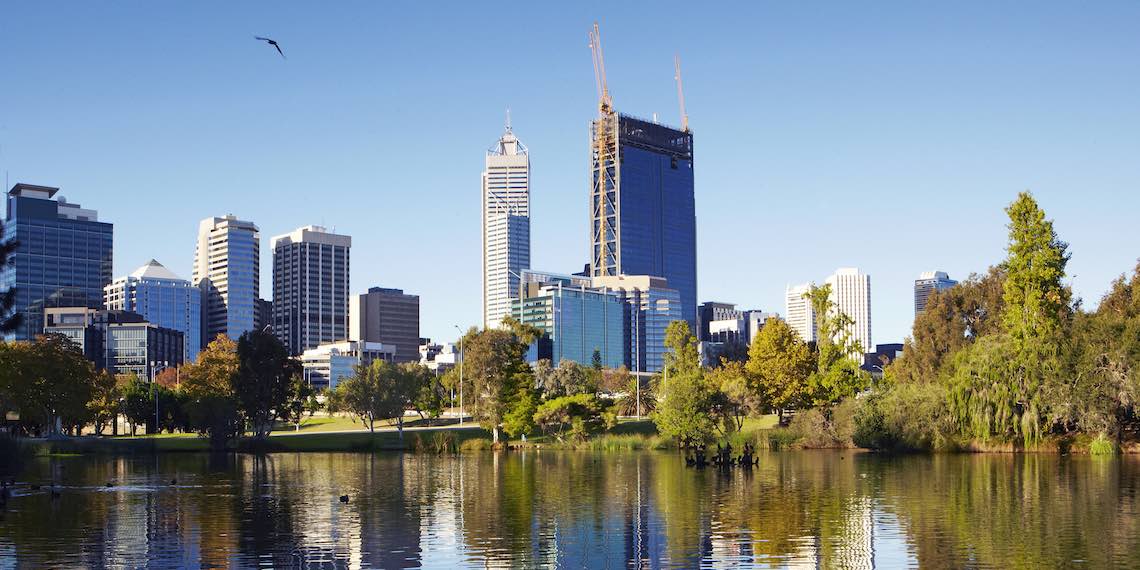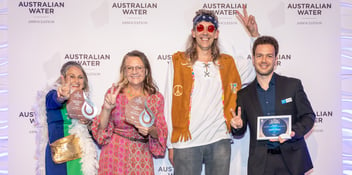First Nations knowledge to guide new waterwise strategy for Perth area

A new waterwise plan launched by the Western Australian Government draws on Indigenous values and knowledge to help the Perth and Peel regions – known as Boorloo and Bindjareb in Noongar language – to better adapt to a changing climate.
Building on the first Waterwise Perth Action Plan, which began in 2019, Kep Katitjin – Gabi Kaadadjan – Waterwise Perth Action Plan 2 incorporates 41 actions across four delivery scales: household and building; precinct and suburb; city and urban; and government leading.
“Western Australia’s most populated centres have not been designed with climate change in mind. Hotter and drier days coupled with a growing population have made Western Australia look to the necessity of a waterwise future, to ensure Boorloo and Bindjareb remain liveable,” said a spokesperson from the WA Department of Water and Environmental Regulation (DWER).
“The 41 actions in this plan will help us to conserve our water resources and, at the same time, support urban greening, biodiversity, the tree canopy and urban cooling to create climate-resilient communities.
“Kep Katitjin complements the Western Australian Climate Change Policy by introducing five new actions focused on water-related climate change data, adaptation and mitigation for state government agencies.”
These actions involve climate projections guidance, climate risk assessment, emissions reduction measures, climate resilient water supplies and planning for reaching net-zero emissions.
A holistic approach
Integrating Noongar knowledge and values is a priority area for delivery of the plan, and DWER is looking for opportunities in each of the program actions to undertake this process.
“The plan has been guided by the Danjoo Koorliny Walking Together Project who have provided wisdom, guidance and advice in the development of this plan,” the DWER spokesperson said.
“The plan uses the Noongar terms for these regions to acknowledge and pay respect to the Traditional Owners, as acknowledged and recognised by the Western Australian Parliament.”
DWER said the term “waterwise” denotes a holistic approach to water in all of its meaning and functions.
“Being waterwise is about showing experience, Katitjin – Kaadadjan (knowledge), good judgement and wisdom in how we consider water resources and our connection to them,” the spokesperson said.
“The Kep Katitjin principle ‘everything is connected’ reflects the Aboriginal and Torres Strait Islander peoples interdependence with land and water. This principle informs how we think about, design and create waterwise communities.
“Partnership with the Noongar people has taught us the importance of sitting together, listening, reflecting and acknowledging we do not always get it right. We need to walk together to learn and go forward together.”
The new plan follows other activities DWER has been undertaking to build a closer relationship with Traditional Owners when it comes to management. This past August, for instance, the department launched its second Innovate Reconciliation Action Plan (RAP) 2022-24.
“The new RAP plan has 13 actions that will focus on creating a shared responsibility for water and the environment, demonstrating a commitment to creating a diverse and culturally safe workplace and increasing the representation of Aboriginal and Torres Strait Islander people employed in the department,” the DWER spokesperson said.
“DWER’s Aboriginal Water and Environment Advisory Group is a direct link to members of the WA Aboriginal community and plays an important role in making sure that the department always considers the Aboriginal perspective in its work, in development of legislation, strategies, policies and programs.”
Other DWER actions include working with Traditional Owners on estuary management and using First Nations’ language names where possible and when DWER has been provided appropriate names to use by cultural informants.
Action needed now
Climate patterns in recent years have accentuated the need for DWER to best manage the state’s water resources.
“Data from the Bureau of Meteorology shows that WA’s summer 2021–22 had a mean maximum temperature 1.63 °C above the 1961–1990 average, with rainfall 20 to 40 per cent below average near the west coast and in the state’s south,” the spokesperson said.
“This data shows that we need to look at innovative ways to manage our water resources while also building resilience.”

